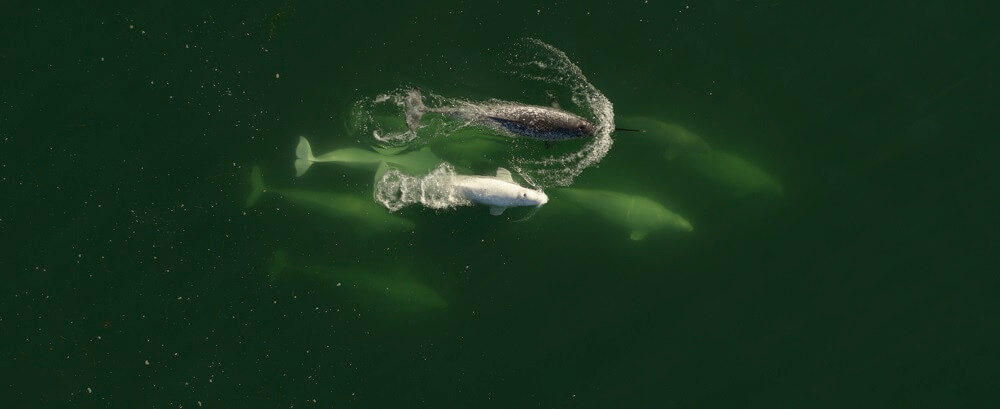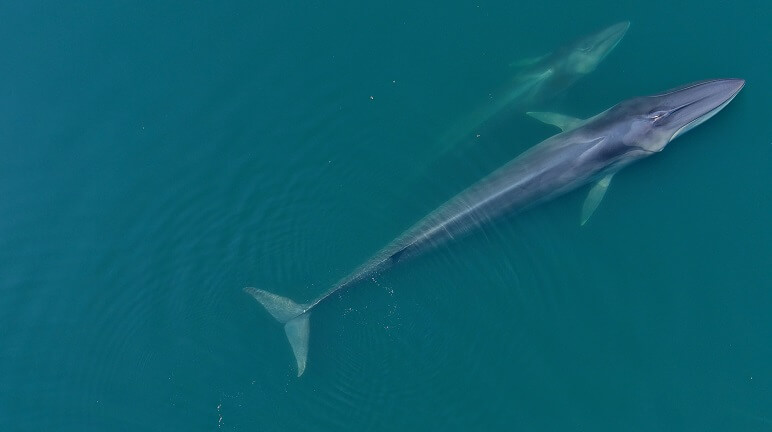When fall arrives and the whales leave the St. Lawrence Estuary for the winter, GREMM takes its boats out of the water and closes the doors of the Marine Mammal Interpretation Centre (CIMM) until the following spring. However, even when Tadoussac turns back into a sleepy little village and cetaceans are few and far between, our teams keep busy! Whether preparing for the next season or compiling data, there is always work to do for a whale researcher. So what exactly does GREMM do all winter long?
The other side of research
Of all the cetacean species that GREMM studies, the most emblematic is of course the St. Lawrence beluga. After collecting volumes of photos, videos and biopsies of these ‘sea canaries’ throughout the summer and part of the fall, it’s time to sort through it all!
For the winter months, one of the tasks of GREMM professional researcher Alexandre Bernier-Graveline is to process over 1,000 photos and view approximately 130 minutes of video footage taken during his team’s outings to sea. His goal? To identify as many belugas as possible and dissect their movements, distribution and social interactions. But it is also a question of finding the 50 individuals biopsied over the course of the year: it is important to identify them individually in order to avoid duplicate sampling and to limit the impact that biopsies can have on these animals.
In terms of large rorquals, researcher Timothée Perrero has also been engrossed in processing photos and identifying individuals this past winter. Amongst other things, this ongoing work makes it possible to expand and update the GREMM catalogue that aims to document these animals. Particular attention is being paid to fin whales this year: notably, we wish to characterize their distribution patterns in the Estuary as well as their degree of site fidelity. Signs of human interference such as scars caused by entanglements or ship strikes are also analyzed as part of this initiative.
But the tasks of research teams during the cold season are not limited to data processing and matching whales. “We also have a lot of planning and writing to do,” says Alexandre Bernier-Graveline. “We have to author reports, apply for project funding, recruit staff and even prepare our protocols for next summer,” he continues. And that’s enough to keep everyone busy. “The deadlines for submitting certain reports are sometimes quite tight, so we often wind up working overtime,” says Timothée.
However, it’s well worth the effort! The results from these projects help us better understand the whales of the St. Lawrence in order to better protect them.
A quiet winter at Marine Mammal Emergencies
All year long, Marine Mammal Emergencies (UMM) responds to calls whenever a dead or struggling marine mammal is reported. But, unlike last year, very few cases have been recorded since the appearance of the first ice. “This past winter was really very quiet,” says Anthony François, who leads the response teams. The off-season is therefore ideal for maintaining UMM equipment, submitting grant applications and following up with volunteers.
Additionally, one long-standing project has recently been completed in our offices. For a year now, UMM technician Méduline Chailloux has been working on developing a new database for the Quebec Marine Mammal Emergency Response Network (QMMERN). Now that it’s in place, this system will allow for better case management, data collection and administrative tasks.
The team is thus more than ready for the return of cetaceans to the Estuary and the challenges that will have to be overcome throughout the upcoming season!
Stay tuned for more on GREMM’s winter activities next week!







